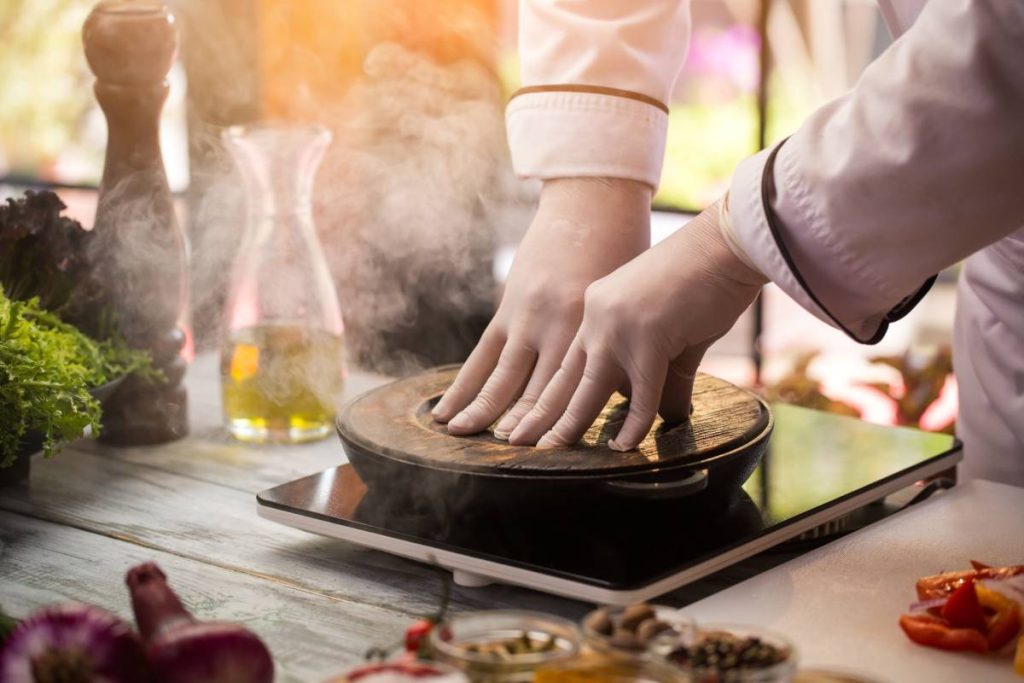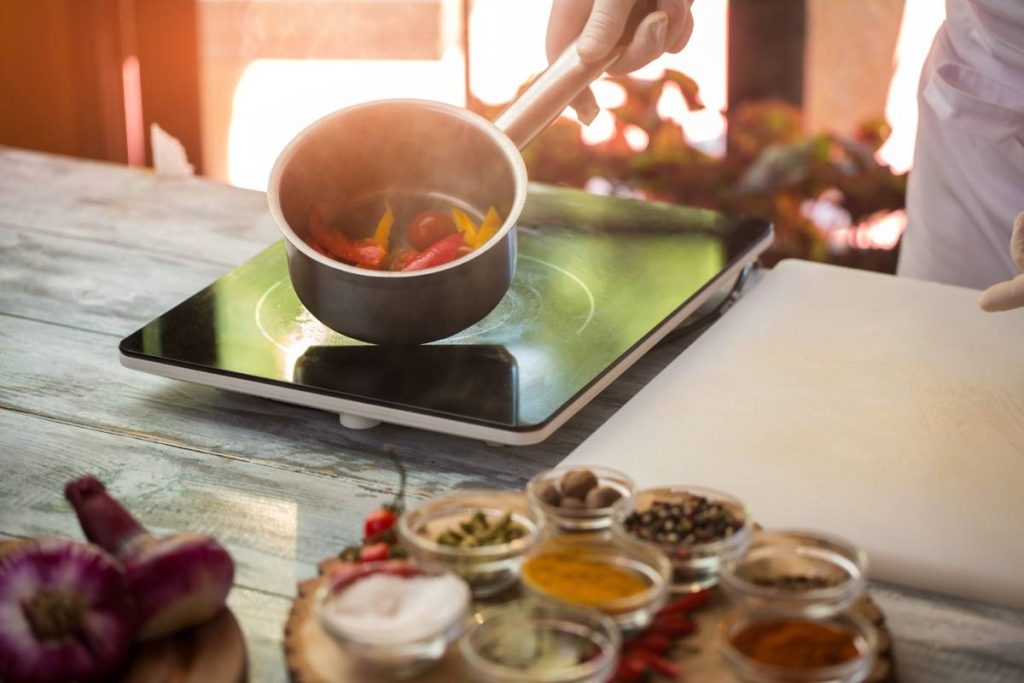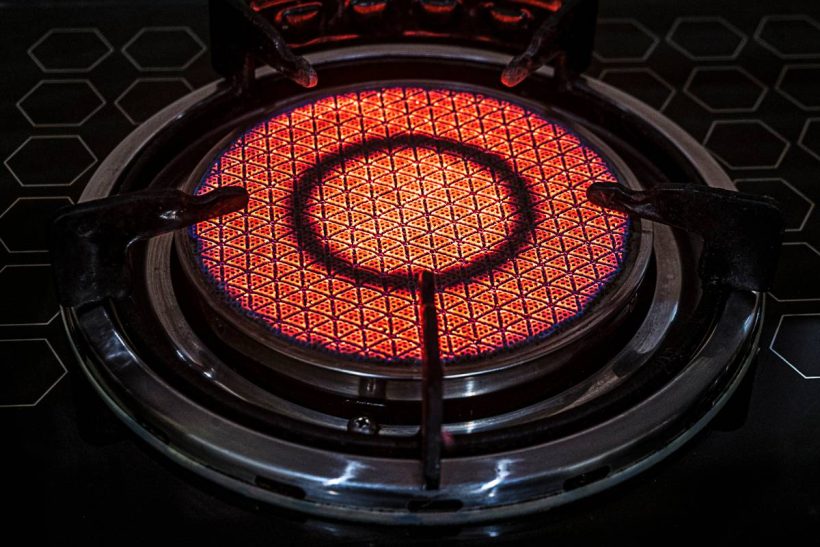Choosing the right stove for your kitchen can greatly impact your cooking experience and the overall functionality of your space. Among the various options available, ceramic stoves offer a blend of modern aesthetics, ease of cleaning, and safety features that make them appealing to a wide range of consumers.
In this article, we’ll explore the pros and cons of ceramic stoves and discuss who might find them particularly well-suited for their cooking needs.
YOU MIGHT ALSO READ:
How does a ceramic stove work?
Ceramic stoves, also known as ceramic cooktops or glass-ceramic cooktops, work by using electric heating elements located underneath a smooth, flat ceramic glass surface. Here’s how they operate:
- Electric heating elements: Beneath the ceramic surface, there are electric heating elements made of coils or radiant heating elements. When you turn on a burner, electricity flows through these elements, generating heat.
- Ceramic glass surface: The smooth ceramic glass surface is highly durable and acts as an insulator, allowing the heat generated by the heating elements to transfer evenly to the cookware placed on top.
- Heat transfer: The heat from the electric elements transfers through the ceramic glass to the bottom of the cookware. This process ensures efficient and even heating of the cookware and its contents.
- Temperature control: Ceramic stoves usually have knobs or touch controls to adjust the temperature of each burner. Some models may also have features like sensors to maintain a constant temperature or to prevent overheating.
- Safety features: Many ceramic stoves come with safety features such as automatic shut-off timers, hot surface indicators, and child locks to prevent accidents.
- Cleaning: The smooth surface of ceramic stoves makes them easy to clean. Spills and splatters can be wiped away with a damp cloth once the stove has cooled down.
Overall, ceramic stoves provide efficient and precise cooking control while offering easy maintenance and a sleek appearance in the kitchen.

What are the pros and cons of ceramic stoves?
Ceramic stoves offer several advantages and disadvantages compared to other types of stoves like gas or induction. Here’s a breakdown of the pros and cons:
Pros
- Easy to clean: The smooth surface of ceramic stoves is easy to wipe clean, making them low maintenance compared to gas stoves with grates or electric coil stoves.
- Sleek appearance: Ceramic stoves provide a modern and sleek look in the kitchen due to their flat, glass surface.
- Even heating: The heat distribution is generally even across the surface of the ceramic stove, leading to consistent cooking results.
- Safety features: Many ceramic stoves come with safety features such as automatic shut-off timers, hot surface indicators, and child locks, making them safer to use, especially in households with children.
- Energy efficiency: Ceramic stoves are more energy-efficient than traditional electric coil stoves, as they heat up quickly and retain heat well.
Cons
- Scratching: The ceramic glass surface can be prone to scratching, especially when using abrasive cleaning materials or sliding heavy pots and pans across it.
- Fragility: While ceramic stoves are durable, the glass surface can be susceptible to cracks or breakage if heavy objects are dropped on it.
- Slow heating and cooling: Ceramic stoves take some time to heat up and cool down compared to gas stoves, which can affect cooking times and convenience.
- Limited cookware compatibility: Ceramic stoves require flat-bottomed cookware for optimal heat transfer. Cookware with warped or uneven bottoms may not make proper contact with the surface, leading to uneven heating.
- Potential for staining: Spills and splatters can leave marks on the ceramic surface if not cleaned promptly, and some substances may cause permanent discolouration if not removed quickly.
Overall, ceramic stoves are a popular choice for their aesthetic appeal, ease of cleaning, and safety features, but they may not be suitable for all cooking preferences or kitchen setups.

Whose ceramic stove suites for?
Ceramic stoves can be suitable for a wide range of people depending on their cooking preferences, lifestyle, and kitchen setup. Here are some groups of people who might find ceramic stoves particularly well-suited for their needs:
- Families with children: Ceramic stoves often come with safety features such as hot surface indicators and child locks, making them safer to use in households with young children.
- Those who prioritize easy cleaning: The smooth surface of ceramic stoves is easy to wipe clean, making them a good choice for people who want a low-maintenance cooking appliance.
- Individuals who prefer modern aesthetics: Ceramic stoves offer a sleek and modern appearance that can complement contemporary kitchen designs.
- Apartment dwellers: If gas stoves are not an option due to safety concerns or building regulations, ceramic stoves provide a reliable alternative that doesn’t require a gas connection.
- Energy-conscious consumers: Ceramic stoves are more energy-efficient than traditional electric coil stoves, making them a good choice for those who want to reduce their energy consumption.
- People with flat-bottomed cookware: Ceramic stoves require flat-bottomed cookware for optimal heat transfer, so those who already own compatible cookware will find them convenient.
- Home cooks who prefer even heating: The even heat distribution of ceramic stoves makes them suitable for cooking techniques that require consistent temperatures, such as simmering and sautéing.
- Individuals with limited space: Ceramic stoves are typically compact and can fit well in smaller kitchens or apartments where space is at a premium.
However, ceramic stoves may not be the best choice for everyone. Those who frequently cook with heavy or oversized cookware, prefer the instant control of gas stoves or have concerns about potential scratching or fragility may find other types of stoves more suitable for their needs.
In conclusion
Ceramic stoves are quite the hit in many homes, thanks to their easy-to-clean surfaces, consistent heat distribution, and sleek look. But they’re not perfect for everyone. You’ve got to think about the downsides, like how easily they can get scratched, the specific pots and pans you need, and the patience required for them to heat up and cool down. Weighing the good with the not-so-good, and considering what you want from your cooking experience, will help you figure out if a ceramic stove is your kitchen’s new best friend.










